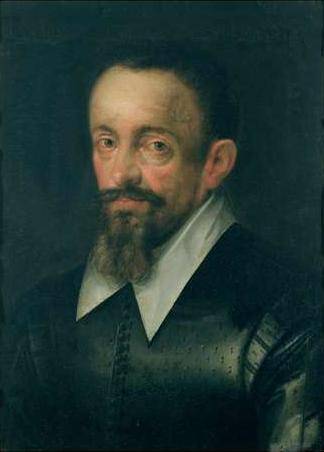
FAQ About Johannes Kepler

Who was Johannes Kepler?
Johannes Kepler was a German mathematician, astronomer, and astrologer who played a crucial role in the Scientific Revolution of the 17th century. He is best known for his three laws of planetary motion which laid the groundwork for Isaac Newton's theory of universal gravitation.

What are Kepler's laws of planetary motion?
Kepler's laws of planetary motion are three scientific laws that describe the motion of planets around the Sun. The first law, the Law of Ellipses, states that planets orbit the sun in elliptical paths. The second law, the Law of Equal Areas, states that a line connecting a planet to the sun sweeps out equal areas during equal intervals of time. The third law, the Law of Harmonies, establishes a relationship between the time a planet takes to orbit the Sun and its average distance from the Sun.

How did Johannes Kepler contribute to astronomy?
Johannes Kepler made significant contributions to astronomy through his formulation of the three laws of planetary motion, which provided one of the first models of celestial mechanics that accurately reflected observations. His work helped to validate the heliocentric model of the solar system and laid foundations for Newton's laws of motion and universal gravitation.

When did Johannes Kepler live?
Johannes Kepler was born on December 27, 1571, and died on November 15, 1630.

What was the significance of Kepler's work on optics?
In addition to his contributions to astronomy, Kepler made important advancements in the field of optics. He studied how lenses form images and developed an improved version of the refracting telescope, which became known as the Keplerian telescope. His work provided insights that are foundational to modern optics.

Did Johannes Kepler believe in the heliocentric model?
Yes, Johannes Kepler was a strong proponent of the heliocentric model of the solar system, which posits that the Earth and other planets orbit the Sun. This model, originally proposed by Copernicus, was further validated by Kepler's laws of planetary motion.

What were some challenges Kepler faced in his scientific work?
Kepler faced several challenges throughout his scientific career, including political and religious conflicts of his time. Additionally, he faced financial difficulties and had limited access to resources. He also worked on the complicated task of interpreting the extensive and accurate astronomical data collected by Tycho Brahe, his mentor.

Who influenced Johannes Kepler's work?
Johannes Kepler was greatly influenced by the work of the Danish astronomer Tycho Brahe, under whom he served as an assistant. Brahe's precise astronomical observations were instrumental for Kepler's formulation of his laws of planetary motion. Kepler was also influenced by the Copernican heliocentric model.

What is the Keplerian telescope?
The Keplerian telescope is a type of refracting telescope improved by Johannes Kepler. It uses a convex lens as its eyepiece, which allows the image to appear inverted but with a larger field of view and better magnification compared to the Galilean telescope.

How did Kepler's work influence Isaac Newton?
Kepler's work, particularly his laws of planetary motion, provided a crucial foundation for Isaac Newton's development of the laws of motion and universal gravitation. Newton's work mathematically explained the gravitational forces that Kepler had observed, linking them with the motion of celestial bodies.

Where was Johannes Kepler born?
Johannes Kepler was born in the town of Weil der Stadt in the Holy Roman Empire, which is now part of modern-day Germany.

What book did Kepler write about planetary motion?
Johannes Kepler's most famous work on planetary motion is called Harmonices Mundi, or Harmony of the Worlds (1619), in which he presents his third law of planetary motion. Another important work is Astronomia Nova, where he details the first two laws.

What was Kepler's approach to science and mathematics?
Kepler's approach to science combined empirical observation with mathematical reasoning. He was one of the first to apply mathematics rigorously to theories of celestial motion, seeking to explain the underlying geometric harmonies he believed existed in the universe.

Did Kepler face any difficulties due to his religious beliefs?
Yes, as a Lutheran living in the Holy Roman Empire, Kepler faced religious challenges during the period of the Reformation and Counter-Reformation. He regularly navigated tensions between Protestant and Catholic authorities, which at times affected his professional opportunities and personal life.

What major astronomical data did Kepler work with?
Kepler worked extensively with the precise astronomical data collected by Tycho Brahe. This data, especially the measurements of the planet Mars, were crucial in formulating his first two laws of planetary motion.

How did Kepler's mother influence his career?
Kepler's mother, Katharina Guldenmann, was known for her interest in herbal medicine and possibly instilled a sense of curiosity in him for the natural world. However, her later involvement in a witch trial posed a significant challenge to Kepler, who had to defend her legally, affecting his work and life.

Did Johannes Kepler have any children?
Yes, Johannes Kepler was married twice and had a total of twelve children, though only a few survived to adulthood.

What other scientific fields did Kepler contribute to?
Aside from astronomy, Kepler contributed to other fields like optics, geometry, and mathematics. He formulated the first mathematical theory of optics, explained how vision works, and also devised a new method for calculating the volume of solids, known as the Keplerian solid packing.

Why are Kepler's laws still important today?
Kepler's laws of planetary motion remain fundamental in today's astronomy and physics as they describe the motion of planets in our solar system with great accuracy. These laws form a critical part of understanding celestial mechanics and are used in various applications, including the tracking of satellites and space exploration missions.

Where did Johannes Kepler die?
Johannes Kepler died in the city of Regensburg, located in modern-day Germany, in 1630.
